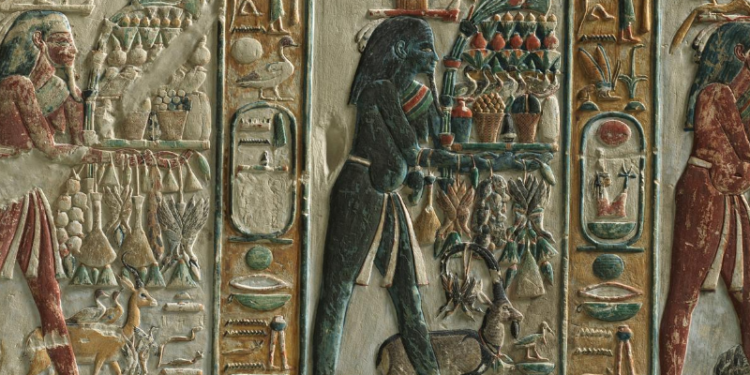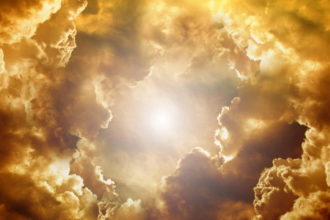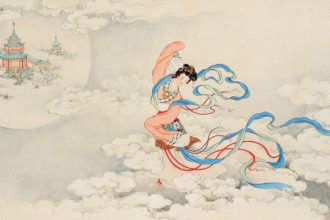Building a Pantheon: Creating Universal Gods

Last week, we looked at how to create a single pantheon for a particular culture or race in your setting. This week we will take a look at how to create universal gods.
In a traditional D&D setting, there are often a group of gods that every culture worships, and then maybe some race-specific pantheons for elves and Dwarves or just one god as a patron for those races. What we’re going to do is take the pantheon that was developed last week and see how each culture might interpret those gods through their particular cultural lens.
Base Assumptions
Let’s revisit the base assumptions about how the divine interacts with the mortal plane from last week.
- Gods and demons cannot directly intervene in mortal events, relying on mortal operatives to accomplish their goals.
- Each culture worships their own pantheon, but the pantheons could be seen as different versions of a set of gods. Each culture interprets them differently, and sometimes combine aspects of two gods, or emphasize one aspect over another. Which gods are given reverence varies from culture to culture.
- While not locked in a direct war against the forces of evil, the good-aligned beings seek in general to better the world for mortals while evil-aligned beings seek to harm, control, or destroy the world.
Point number two is our focus. Let’s explore this conception of divinity some more.
The gods are inherently unknowable by mortals, with plans, motivations, and even appearances that are as incomprehensible to us as real-world cultures are to an ant. Therefore, it is impossible for any particular culture in our setting to know perfectly the true form or even the name of any deity.
They connect to their mortal followers through visions, manifestations, and omens that must be interpreted. This, of course, causes variation and conflicting opinions and dogmas surrounding the worship of gods. Some cultures might even assign completely different attributes to a god, or split them apart, or not even acknowledge a god of another culture as being one worthy of their worship.
Creating Pantheons for Other Cultures
Now, let’s make us some gods!
Take the gods you made last week and let’s return to the base archetypes that we based them on. So, for our elvish pantheon we have:
- Mahervjoth, the Allmother
- Archetype: Mother Nature
- Selaryndirith, The Tree Lord
- Archetype: Father figure; Green man
- Faranvallith, The Magic Sun
- Archetype: Sun Youth, Magic Sage
- Uhrafasdirith, The Moon Huntress
- Archetype: Moon maiden, War god
- The Reborn Goddess
- Archetype: Death goddess
- Kruvaarhtoth, The Blackwolf
- Archetype: The great enemy
- The Old Man Smith
- Archetype: Craftsman
So, how do we adapt this to a new culture? By doing two things:
- Centering the new pantheon on the culture’s core values
- Adapting the first pantheon to fit the culture’s values.
The adaption process is a lot easier than the initial creation, as it is really just about becoming more specific.
Center on the Culture’s Values
Let’s create a new pantheon for dwarves!
So the values that the dwarves focus on include:
- Clan & community
- Masterful creation
- Endurance
- Order
If we could sum up the dwarven ethos in one sentence “Forge a good life” could be it. Therefore let us center the pantheon on the Craftsman archetype. Also, consider such cultural constraints like family structure. Most pantheons are arranged to mirror families and feature a web of familial connections.
Adapt to fit the Culture’s Values
Knowing what the dwarves value, you can then adapt the elvish pantheon to fit the dwarven culture. There is no need to create exactly one to one correlations between the two pantheons, and as you’ll see, I actually split some of the elvish gods up and spread their domains around to create a new original pantheon, that echoes the elvish one.
Also, consider the physical and material constraints of the culture. Dwarves, living underground, have no need or real conception of the sky or celestial bodies, so those aren’t really present in my pantheon. Instead, each god represents a craft that is highly valued among the dwarves.
Let’s see what I came up with:
The dwarves see the Gods as their direct ancestors but take only a handful as being truly dwarven. Worshiping surface gods is tacitly accepted, but considered eccentric. ]
- The Forgemaster
- Primary god; stern father figure, sometimes depicted as hermaphroditic, or female and creating the other gods out of the earth and stone.
- Domains: Forge, Life, Order
- The Runescratcher
- Daughter of the Forgemaster
- Equivalent to Faranvallith in the elven pantheon
- Domains: Arcana, Knowledge
- Toothgrinder, the Berserker
- War god, chained son of the Forgemaster; seen as responsible for bad events yet the struggle is seen as the tempering process for a soul and necessary.
- Domains: War, Trickery
- The Brewer
- Wife/Husband to the Forgemaster
- Domains: Light, Protection, Unity
- The Miner
- Son of the Forgemaster
- Takes the souls of the dead and mines them to give to the Forgemaster to recast into Dwarves
- Domains: Death, Grave, Nature
You can see that this pantheon has many of the same archetypes as the elven one. The Forgemaster is the progenitor Earth Mother/Father. The Runescratcher is the god of Magic & knowledge, the Toothgrinder is their war god and blends some aspects of the “great enemy” archetype, the Brewer is where we find another mother and father figure centered around the hearth and home, and the Miner is the death god.
Each of these deities hints at larger, interconnected mythology in which each god plays a role as a character.
You can repeat this process for each of the cultures in your game world, creating unique, yet connected pantheons for each. And don’t worry about messy! Messy makes realistic culture.
Next week we’ll look at impersonal and personal gods.



